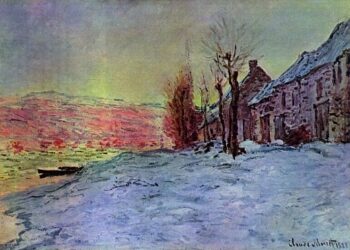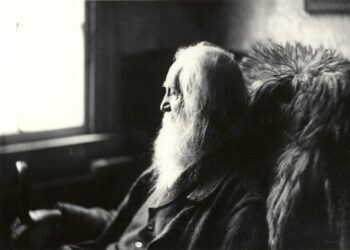Introduction to “Sheep in Fog”
Poem Sheep In Fog Summary By Sylvia Plath Published in 1962, Sylvia Plath’s “Sheep in Fog” is a haunting and introspective poem that explores themes of loss, identity, death, and emotional isolation. The title itself conjures images of an eerie, fog-covered world where the familiar is obscured, both literally and figuratively. Plath’s use of natural imagery—specifically the metaphor of sheep in fog—conveys a sense of disorientation, confusion, and the inability to see or understand one’s surroundings, much like the inner psychological state of the speaker.
Written during a period of intense emotional and psychological turbulence in Plath’s life, “Sheep in Fog” can be seen as a reflection of her own struggles with identity, mental health, and a growing sense of disconnection from the world around her. The poem is often viewed as one of Plath’s more enigmatic and somber works, offering insight into her emotional state as she grappled with personal and existential crises.Poem Sheep In Fog Summary By Sylvia Plath Published
Detailed Poem Summary
First Stanza:
The poem begins with a description of a landscape filled with sheep that are enveloped in fog. The fog is so thick that the sheep are barely visible. The speaker in the poem presents an image of confusion and isolation, as the sheep move aimlessly through a world obscured by mist. The sheep, as passive creatures, symbolize the speaker’s own feelings of being lost and disoriented. There is a sense that these creatures, like the speaker, are trapped in an environment they cannot fully understand, and there is no clear direction or clarity ahead.
Read More
The fog in this stanza acts as a metaphor for the speaker’s emotional state, which is clouded, filled with uncertainty, and detached from reality. The speaker’s perception of the sheep as “trudging” through the fog suggests an underlying struggle or effort in simply existing or moving forward. The fog symbolizes a psychological barrier: a sense of detachment or an inability to connect with others or oneself.
Second Stanza:
In the second stanza, the speaker reflects on their own state of confusion, which is mirrored by the sheep. The speaker seems to be searching for something—perhaps a sense of clarity, purpose, or direction—but is unable to find it. The fog impedes their ability to understand their surroundings, just as the speaker feels incapable of understanding their own emotions or thoughts. The phrase “I am nobody” indicates a deep sense of alienation and loss of self-identity. The speaker feels erased, as if they no longer exist in the way they once did or wish to.Poem Sheep In Fog Summary By Sylvia Plath Published

The image of the fog deepens in its symbolic weight. The fog not only obscures the sheep but also veils the speaker’s own sense of existence, suggesting a world where the individual self is hidden and lost. The fog creates a psychic barrier, separating the speaker from others and from their own understanding of themselves. The sheep, as passive creatures, add to this sense of disempowerment, suggesting that the speaker may feel trapped in their own emotional paralysis.
Third Stanza:
The third stanza continues with the speaker’s introspective journey as they begin to question the very idea of truth and reality. There is a feeling of disillusionment as the speaker contemplates the world around them, unsure of how to proceed. The speaker feels as though they are “pushed” into this fog, suggesting a lack of control or agency over their own emotions or environment. The fog has become a kind of emotional prison, and the sheep’s “bleating” echoes the speaker’s own inner cry for help or release.
The use of bleating also alludes to the speaker’s own sense of helplessness. As the sheep are driven to move forward blindly, so too does the speaker feel pushed by forces beyond their control. The theme of blindness and confusion is reinforced by the sheep’s lack of direction and the speaker’s own inability to find a clear path.Poem Sheep In Fog Summary By Sylvia Plath Published
Fourth Stanza:
In the fourth stanza, the speaker begins to reference death, using the fog as a metaphor for the unknown. The poem’s tone darkens here, and the speaker seems to anticipate something terrible or final—something beyond the fog, yet still shrouded in it. The allusion to death is clear, but it is approached with hesitation, as if the speaker is not entirely certain whether they are moving toward it or away from it. The fog seems to offer no answers, only a sense of waiting, and the speaker is suspended in a kind of psychological limbo.
There is a sense of foreboding in this stanza, suggesting that the speaker is grappling not only with their own sense of emotional isolation but also with the existential realities of mortality. The poem uses nature—in the form of fog, sheep, and distant sounds—as a reflection of the interior life of the speaker, a life that is both opaque and full of unanswered questions.Poem Sheep In Fog Summary By Sylvia Plath Published
Fifth Stanza:
The final stanza of the poem provides a moment of resignation. The speaker seems to accept their fate, whatever it may be, with a sense of passive surrender. The sheep are still trudging forward in the fog, and the speaker, too, seems to be caught in the same cycle. There is a suggestion that the speaker is attempting to reach a place of clarity but is still unable to see through the fog.Poem Sheep In Fog Summary By Sylvia Plath Published
The final lines reflect the ongoing struggle for understanding and self-realization. Despite the passage of time and the continual movement, the speaker finds themselves unable to gain clarity or resolution. The fog remains, both a literal and symbolic barrier between the speaker and the world around them. In this way, the poem ends in a quiet, unresolved ambiguity, reflecting the persistent feelings of doubt, loss, and disconnection that characterize the speaker’s emotional landscape.Poem Sheep In Fog Summary By Sylvia Plath Published
Read More
Thematic Analysis of “Sheep in Fog”
- Alienation and Isolation:
The poem explores the speaker’s alienation from the world, reflecting feelings of emotional isolation. The fog serves as a powerful metaphor for the speaker’s inability to connect with their environment, their sense of self, or others. The sheep, wandering aimlessly in the fog, reflect the speaker’s own disorientation and inability to find a way forward.Poem Sheep In Fog Summary By Sylvia Plath Published - Death and Mortality:
Throughout the poem, there are subtle references to death, which Plath presents as a looming, ever-present uncertainty. The fog symbolizes the unknown, and the speaker’s constant movement through it suggests an existential journey toward the inevitable. The sheep’s disoriented wandering evokes the idea of death as a final destination, but one that remains unclear, hidden, and elusive. - Psychological Struggle:
The poem’s fog is also a metaphor for the psychological fog that often accompanies depression and mental illness. Plath’s use of natural imagery is a way of illustrating how the mind can become clouded with confusion, preventing the speaker from gaining clarity or understanding. The ongoing struggle to move forward without seeing clearly reflects the difficulties of living with emotional or mental health challenges.Poem Sheep In Fog Summary By Sylvia Plath Published

- Existential Crisis:
There is an existential dimension to the poem, as the speaker questions their identity and purpose. The speaker’s feeling of being “nobody” captures the disillusionment and self-doubt that can accompany moments of crisis. The fog is not just a physical barrier but an emotional and philosophical one, preventing the speaker from finding meaning or understanding in their life. - Impossibility of Resolution:
The poem’s lack of resolution reinforces the theme of inability to find clarity. The fog never lifts, and the speaker never gains a sense of direction or understanding. This unresolved quality reflects the persistent uncertainty and turmoil that can define human existence, particularly for someone grappling with inner psychological conflict.
Read More
Symbolism in “Sheep in Fog”
- Fog:
The fog in “Sheep in Fog” is a central symbol in the poem. It represents confusion, disorientation, and the unknown. The fog obscures vision, mirroring the speaker’s internal state of confusion and emotional numbness. It is both a literal and symbolic barrier between the speaker and the world they wish to understand. - Sheep:
The sheep symbolize passivity, conformity, and blindness. The sheep are followers, moving without direction or purpose, much like the speaker feels in their own life. The sheep’s actions suggest that the speaker is caught in a cycle of aimlessness and emotional paralysis. - Death:
The references to death throughout the poem, while subtle, point to the inevitable and unavoidable nature of mortality. The speaker’s uncertainty about what lies beyond the fog hints at the unknown aspects of death, which, like the fog, remain concealed and beyond one’s control.
(FAQ)
1. What is the meaning of the “sheep” in the poem?
The sheep represent passivity, conformity, and blindness. They are led by forces beyond their control and move aimlessly through the fog, mirroring the speaker’s feelings of emotional confusion and disconnection. The sheep’s wandering reflects the speaker’s own internal state of being lost and directionless.
2. How does Plath use imagery to convey the speaker’s emotional state?
Plath uses fog and sheep as powerful metaphors to depict the speaker’s emotional confusion and isolation. The fog represents a psychological barrier, preventing clarity and understanding. The sheep, aimlessly wandering, reflect the speaker’s own feelings of being trapped in a cycle of disorientation and helplessness.
3. How does the poem address the theme of death?
“Sheep in Fog” addresses death through its imagery of the fog, which serves as a metaphor for the unknown and unavoidable nature of mortality. The speaker seems to move toward an unseen destination, unsure of what lies ahead, much like the unknown nature of death itself. The fog becomes a symbol of the emotional and existential limbo between life and death.
4. What is the significance of the title “Sheep in Fog”?
The title underscores the poem’s central themes of confusion and disorientation. The sheep in the fog are symbolic of the speaker’s state of mind—aimless, uncertain, and lost in the fog of emotional and psychological turmoil. The fog acts as both a literal and metaphorical barrier to clarity and understanding.
5. How does the poem reflect Sylvia Plath’s own experiences?
The themes of confusion, alienation, and existential crisis in “Sheep in Fog” reflect Plath’s own struggles with mental health, identity, and the search for meaning. The poem can be seen as a reflection of Plath’s own emotional turmoil during the time it was written, marked by personal challenges and a growing sense of psychological isolation.
6. What is the overall tone of the poem?
The tone of “Sheep in Fog” is somber, introspective, and haunting. The speaker’s journey through the fog conveys a sense of emotional paralysis and psychological anguish, evoking feelings of helplessness and uncertainty. There is a pervasive sense of loss, both of identity and purpose.
Read More

















